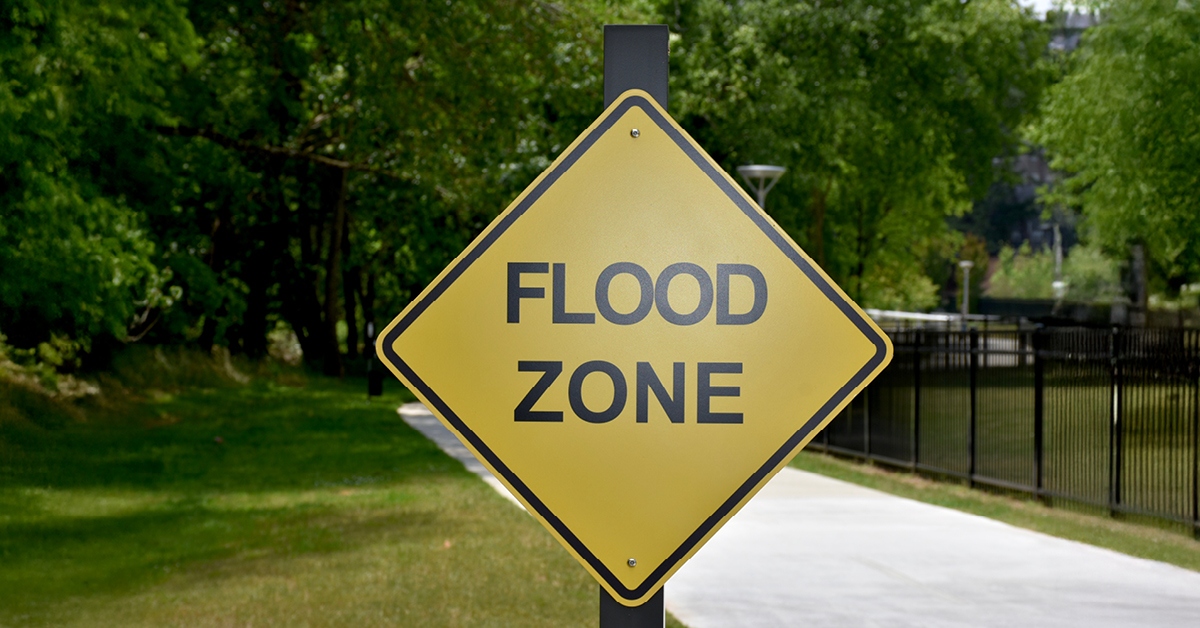
The False Sense of Security
Every year, hurricanes and tropical storms dump record-setting rain in places far from the coast — and outside official FEMA flood zones. Yet millions of homeowners assume they’re safe because their mortgage doesn’t require flood insurance. But the water doesn’t check FEMA maps.
After Hurricane Harvey in 2017, more than 70% of flood-damaged homes in Houston were outside high-risk zones source. Many homeowners didn’t carry flood insurance because they weren’t told to. The result? Financial devastation.
It’s a mistake that continues every year — especially in places like Florida, Texas, and the Carolinas, where flat terrain, rising water tables, and changing weather patterns make almost every home a flood risk, whether it’s on a map or not.
📍 Case Study: Hurricane Ian's Inward Reach
When Hurricane Ian hit Florida in 2022, most people watched the storm surge on the coast. But the real surprise came days later — in inland counties like Orange, Osceola, and Seminole, where creeks overflowed and flat neighborhoods filled like bathtubs
More than 20 Florida counties saw flood claims, including from areas far outside FEMA flood zones. People living 40+ miles inland found their living rooms under water — without flood coverage.
💡 Real Voices, Real Losses
“If you live in a flat state surrounded by water — like Florida — everywhere is a flood zone." — Chris H., Brightway Agent
“A client turned down a $1,000 flood quote in 2019. Ian hit, and they had over $70,000 in damage. No coverage. By the time they reconsidered, FEMA's pricing model had shifted and that same policy was $4,500. That’s the cost of waiting. Luckily, they finally got a policy — and the very next storm brought another $50K in damage. But this time, they were covered.” — Tyler S., Brightway Agent
This story plays out again and again. It’s just how flood insurance works. Once the storm is named, it’s too late to buy coverage. And when FEMA revises risk maps or rates, you could end up paying thousands more.
💬 What Homeowners Misunderstand About Flood Coverage
Many assume homeowners insurance covers all storm damage — but that’s only partially true. Here's how it breaks down:
| Event | Covered by Homeowners Policy? | Covered by Flood Insurance? |
|---|---|---|
| Wind-driven rain through roof | ✅ Usually | ❌ |
| Storm surge or rising water | ❌ | ✅ |
| Sewer backup from flooding | ❌ (requires endorsement) | ❌ (unless also endorsed) |
| Overflowing creeks, rivers | ❌ | ✅ |
| Damage from mudslides or flash floods | ❌ | ✅ (with NFIP or private policy) |
📌 Flood insurance is a separate policy. You can buy it through the NFIP (FEMA) or a private market carrier — often via your Brightway agent.
🧾 Understanding Flood Insurance Basics
| Feature | FEMA/NFIP | Private Market |
|---|---|---|
| Max Coverage | $250K (home) + $100K (contents) | Higher limits available |
| Waiting Period | 30 days | Often 10–14 days |
| Available Through | Most agents | Select carriers |
| Best For | Basic protection in moderate risk areas | Higher-value homes or flexible features |
➡️ Explore more: FEMA FloodSmart.gov
🧠 Why People Delay — And Why That’s Dangerous
People don’t skip flood insurance because they want to. They skip it because:
- Their mortgage doesn’t require it
- They’ve never seen standing water on their street
- The policy feels like an “extra”
But a flood event doesn’t need to be a hurricane. Flash floods from stalled rain bands or clogged storm drains are just as destructive. And the costs are steep:
- Average flood claim: $44,000 Source: FEMA
- Policy cost through NFIP: ~$700/year for many areas
- Out-of-pocket costs for uninsured flood loss: Often >$25K–$100K
⏳ Can I Add Flood Coverage Right Before a Storm?
No. Once a storm is named by the National Weather Service, most insurance carriers issue a moratorium — a temporary suspension of policy changes, additions, or new policies.
That means:
- You can’t add flood insurance
- You can’t raise limits or lower deductibles
- Your Brightway agent also can’t override the moratorium
🔐 Brightway’s Role: Planning Before the Storm Hits
Brightway is not your insurance carrier. That means we don’t:
- Handle claims
- Determine moratorium rules
- Decide payout amounts
But here’s what we do:
- Review your current policy and show gaps
- Quote and bind both NFIP and private flood options
- Explain how storm-related coverage works — so you’re not surprised later
💬 Already a Brightway customer? Log into myBrightway to check your current coverage and message a licensed agent.
🙋♀️ FAQs
Is flood insurance required outside high-risk zones?
Only if you have a federally-backed mortgage in a high-risk area. But 80% of flood claims come from homes outside of high-risk zones.
Will my homeowners policy cover flooding from a storm?
No. Rising water, storm surge, or flash flooding all require separate flood insurance.
What’s the best time to get flood insurance?
Before storm season. Most policies have a waiting period, and no changes are allowed once a storm is named.
✅ Bottom Line: You Don’t Need to Live on the Coast to Need Flood Coverage
FEMA flood maps can’t predict the future. And your standard home policy wasn’t built for everything a storm might bring.
Brightway agents help you:
- Plan ahead of storm season
- Build a realistic protection plan
- Avoid learning the hard way — when it’s already too late